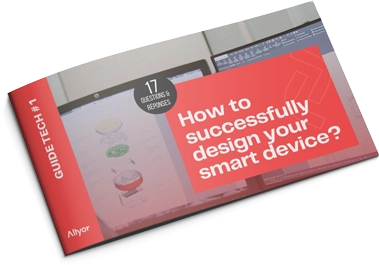You’ve probably already heard of “design for manufacturing”, or rather the acronym “DFM” more widely used in our industrial jargon. Simply put, it’s the set of rules used in industry to design products that can be easily manufactured.
So why is DFM so important to the design process?
Lorsque notre bureau d’études en ingénierie mécanique conçoit un produit, il s’intéresse d’abord aux fonctions principales, son design, ses performances, l’expérience utilisateur.
Est-ce que le produit va plaire ? va-t-il fonctionner ? sera-t-il robuste ?
Lorsqu’il s’agit de fabriquer un produit en grande série, il est essentiel de se préoccuper des contraintes de fabrication.
L’objectif est d’avoir un rendement élevé lors des séquences de fabrication, d’assemblage et de tests avec une parfaite maitrise de la qualité.
Le process de fabrication doit être économiques et capacitaires.
Mais concrètement à quoi ça correspond ?
Pour la fabrication des pièces on parle d’injection, d’extrusion, d’emboutissage et autres procédés qui impliquent la réalisation d’outillages avec des contraintes très spécifiques.
La conception de la carte électronique doit être optimisée pour réduire au maximum les pb qualité et surtout que l’on puisse facilement la contrôler a partir d’un banc de test automatisé.
il faut optimiser la mise en panneau des PCB, prévoir le découpage, s’assurer que les empreintes des composants soit bien dimensionnés et qu’ils permettent une seconde source
Le DFM s’applique aussi aux contraintes d’assemblage, l’ajout de guidage et de détrompage entre les pièces pour faciliter le travail des opérateurs et ainsi améliorer la qualité du produit.
What are the advantages of design for manufacturing (DFM)?
Adopting DFM offers several significant advantages for manufacturers and product designers.
Reduce manufacturing costs
By integrating manufacturing-optimized design techniques right from the start, you can reduce the costs associated with production. This includes minimizing material waste, improving process efficiency and reducing production rejects.
Improving manufacturing quality
DFM improves the quality of finished products by ensuring that each component is designed to be manufactured with precision and consistency. This reduces errors and variations in products, contributing to greater customer satisfaction.
Faster time to market
By anticipating and solving potential manufacturing problems at the earliest design stage, DFM reduces the time needed to move from design to production. This offers a competitive advantage by enabling faster time-to-market.
What are the DFM (design for manufacturing) stages?
Optimizing design for manufacturing involves several key steps, each of which plays a crucial role in ensuring the efficiency of the manufacturing process.
Analysis and Prototyping
Preliminary analysis and prototyping are essential to assess the feasibility of the design. This stage enables potential weak points to be identified and modifications made before production is launched.
Integration of Manufacturing Techniques
Once the prototypes have been validated, it’s important to integrate the appropriate manufacturing techniques. This includes choice of materials, selection of production processes and implementation of quality control regimes.
Testing and Validation
Before launching full-scale production, rigorous tests and validations are carried out to ensure that products meet quality and performance standards. This step ensures that finished products meet customer expectations.
Design for Manufacturing (DFM) is an essential approach for any company seeking to optimize its manufacturing processes. By integrating DFM, you can reduce costs, improve quality and accelerate time-to-market. At Altyor, we’re DFM experts, and we’re committed to helping you turn your ideas into efficient, cost-effective manufactured products.
Get a quote tailored to your project!
FAQs on Design for Manufacturing (DFM)

How to design a successful connected object?
Mechanical and electronic design is the first major step in your product journey. It will lead you to the prototyping, industrialization and production phases. In this guide, you’ll discover 18 key points for designing your connected object.
From design to industrialization, production and remanufacturing, we offer ongoing, customized global support to ensure the success of your project.
01
Innovation support
_Building a solid foundation for your industrial project
02
Mechanical and electronic design
_Giving lasting life to your product
03
Industrialization
_Industrializing your product to make your production more reliable
04
Production
_Implementing your robust production line
05
Remanufacturing
_Supporting your product’s life cycle